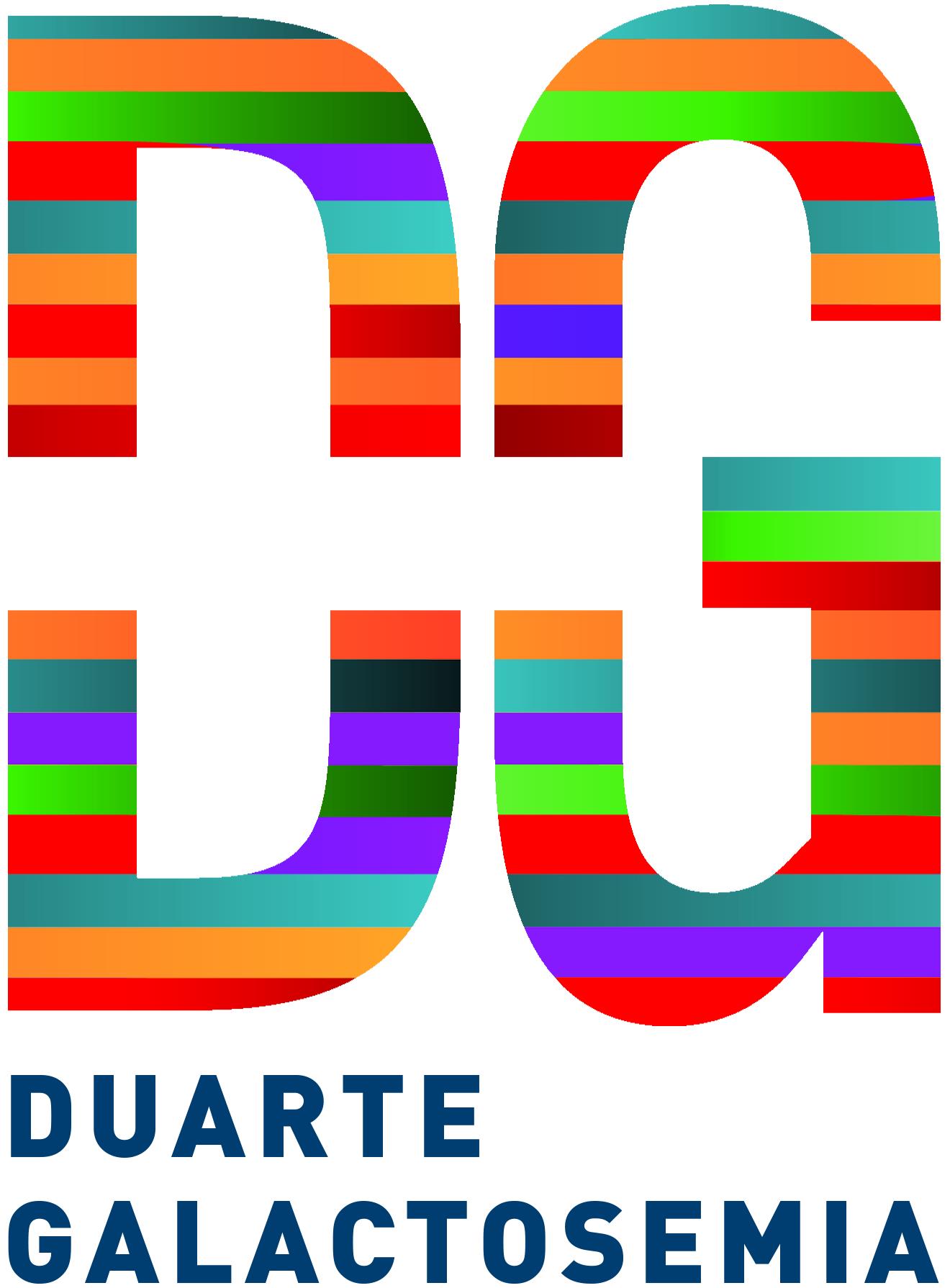FOR HEALTHCARE PROFESSIONALS
Genetics/Inheritance
Duarte galactosemia (DG) is a genetic condition that is inherited as a Mendelian autosomal
recessive trait. A child with DG carries two different types of GALT alleles, one inherited from each
parent. One of these GALT alleles, the G allele, carries a mutation that severely impairs the
expression or function of the encoded GALT enzyme. If a child inherits two G alleles they will have
classic galactosemia. In DG, the second GALT allele is a D or D2 allele, which carries a set of
changes that partially compromise the expression and alter some biochemical properties of the
encoded GALT enzyme. Together, the G and D alleles produce about 25% of the normal level of
GALT enzyme activity found in a person with two normal (N) GALT alleles.
Treatment/Management
There is no broadly accepted standard of care for infants with DG. Some healthcare providers
recommend partial to complete dietary restriction of milk and other high galactose foods for infants
with DG; others do not. Because children with DG develop increased tolerance for dietary
galactose as they grow, few healthcare providers recommend dietary restriction of lactose or
galactose beyond the first year of life.
Healthcare providers who do recommend partial or complete dietary restriction of galactose for
infants with DG generally cite concern about the unknown long-term consequences of abnormally
elevated galactose metabolites in a baby’s blood and tissues. Infants with DG who continue to drink
milk accumulate the same set of abnormal galactose metabolites seen in babies with classic
galactosemia (e.g. galactose, Gal-1P, galactonate, and galactitol), but to a much lesser extent.
While it remains unclear whether any of these metabolites contribute to the long-term developmental
complications experienced by so many older children with classic galactosemia, the possibility that
they might cause problems serves to motivate some healthcare providers to recommend dietary
galactose restriction for infants with DG. Switching an infant with DG from milk or milk formula (high
galactose) to soy formula (low galactose) rapidly normalizes their galactose metabolites. This
approach is considered potentially preventative rather than responsive to acute symptoms. If dietary
galactose restriction of any kind is followed for a baby with DG, many healthcare providers
recommend that the baby have a galactose challenge performed by 12 months of age.
Healthcare providers who do not recommend dietary restriction of galactose for infants with DG
generally consider DG to be of no clinical significance. Further, these providers may be opposed to
interrupting or reducing breastfeeding when there is no clear evidence it is contraindicated. These
providers may argue that the recognized health benefits of breastfeeding outweigh the unknown
potential risks of continued milk exposure for these infants. For infants with DG who continue to
drink milk, some doctors may recommend that blood galactose-1-phosphate (Gal-1P) or urinary
galactitol be rechecked by age 12 months to ensure that these metabolite levels are normalizing.
Some options for those who wish to restrict dietary galactose include:
If dietary galactose restriction of any kind is followed in infancy and the family expresses interest in
relaxing the child’s diet, some healthcare providers recommend that a galactose challenge be
performed, often around 12 months of age. Most infants with DG who are followed by a metabolic
specialist are discharged from follow-up after a successful galactose challenge. Of note, some
families may not be eager to relax their DG child’s diet at 12 months, or may object to conducting a
galactose challenge, so this is something that should be discussed before it is recommended.
Conducting a Galactose Challenge
The goal of a galactose challenge is to determine whether a child with DG who has been on a low
galactose diet might have developed the ability to handle larger quantities of dietary galactose
without experiencing an unacceptable rise in galactose metabolites. There are many possible ways
to conduct a galactose challenge; here is one:









■
Full dietary restriction of breast milk, cow’s or other forms of natural milk, formula containing milk, and high-galactose dairy products until about 12 months of age, or
■
A compromise approach in which the baby alternates feedings of breast milk and low galactose formula, or some other combination of milk formula and low galactose feedings for the first year of life, or
■
Some families may choose to restrict galactose for longer periods or following other protocols.
■
First, collect a blood sample while the child is still on a low-galactose diet and check to see that their erythrocyte galactose-1-phosphate (Gal-1P) level is within the normal range (<1.0 mg/dL). If it is not, do not conduct the galactose challenge.
■
Next, gradually liberalize the child’s dietary intake of galactose. This can be achieved by having the parents gradually introduce dairy products into the child's diet until they reach the desired amount.
■
Finally, obtain a follow-up erythrocyte Gal-1P level after the child has been consuming the desired diet for one month. If this lab result is still within the normal range (<1.0 mg/dL) dietary restriction of galactose is not resumed.
■
If the follow-up lab result shows abnormally elevated Gal-1P (≥1.0 mg/dL) dietary restriction of galactose is resumed, and the challenge can be repeated, usually after at least several months.
